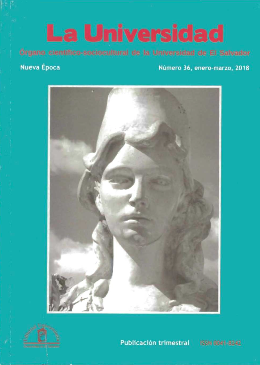Cervantes Ludens
el milagro que no cesa
Keywords:
Cervantes, El Quijote, Modern novelAbstract
The current articJe, written by the Northamerican academic James Iffland, is based on the prem;se that the success ofDon Quixote s;nce itsfirst publication lies in the depletion of the literary gen res that were popular at that time -the novels of chiva/ry and pastoral nove/s. The characters used to be flat, the actions narrated in the adventures ofthe knights containedfantastic elements and extremely exotic situations, which were incrediblefor the bulk ofreaders. Thisfatigue ofthe receiver.c; was known by Cervantes and knew how to take advantage of through a new path: laughter
Downloads
References
Alter, Robert. Partial Magic The Novel as a Self-Conscious Genre. Berkeley: Universíty of California Press, 1975.
Bajtín, Mijail. La cultura popular en la Edad Media y en el Renacimiento: el contexto de Francois Rabelais. Trad. J. Forcat y C. Conroy. Madrid: Alianza, 1987.
Blanco Aguinaga, Carlos. "Cervantes y la picaresca: notas sobre dos tipos de realismo". Nueva Revista de Filología Hispánica, XI (1957),313-42.
Borges, Jorge Luis. "Magias parciales del Quijote." En Otras inquisiciones, 55-58. Buenos Aires: Sur, 1952.
Braudel, Fernand. El Mediterráneo y el mundo mediterráneo en la época de Felipe l/. 2 tomos. Madrid: Fondo de Cultura Económica de España, 2001 [versión original en francés, 1949].
Casasayas. José María y Antonio Bernat Vistarini. eds. Desviaciones lúdicas en la crítica cervantina. Salamanca: Universidad de Salamanca/ Universitat de les Illes Balears,2000.
Cervantes, Miguel de. Don Quijote de la Mancha. Ed. Francisco Rico. Madrid: Real Academia Española. 2004.
Cervantes. Miguel de. Don Quijote de la Mancha. 2 tomos. Ed. Francisco Rico et al. Madrid: Real Academia Española, 2015.
Cervantes, Miguel de. Don Quijote de la Mancha. Edición de la Real Academia Española. adaptada por Arturo Pérez-Reverte. Madrid: Real Academia Española/Santillana. 2014.
Cervantes. Miguel de. Don Quijote de la Mancha, puesto en castellano actual íntegra y fielmente por Andrés Trapiello. Barcelona: Ediciones Destino, 2015.
Cervantes, Miguel de. Novelas ejemplares, tomo I. 4a ed. Ed. Harry Sieber. Madrid: Cátedra, 1982.
Cervantes, Miguel de. Viaje del Parnaso. Biblioteca Virtual Miguel de Cervantes. http://www.cervantesvirtual.comjobra-visorjviajedel-parnaso--Ojhtmljff32aa90-82bl-l1df-acc7-002185ce6064_34.html
Christakis, Dimitri A. y F. Zimmermap, D. DiGiuseppe, C.McCarty. "Early Television Exposure and Subsequent Attentional Problems in Children". Pediatrics. Vol. 113, núm.4 (abril 2004). 708-13.
Cortázar, Julio. "Continuidad de los parques". En Final del juego. Buenos Aires: Sudamericana. 1956.
Dworak, Markus y 1'. Schierl. 1’. Bruns. H. K. Strüder. "Impact of Singular Excessive Computer Game and Television Exposure on Sleep Patterns and Memory Performance of School-aged Children". Pediatrics. Vol. 120. núm. 5 (noviembre 2007), 978 - 85.
Eisenberg. Daniel. Romances of Chivalry. Newark. Delaware: Juan de la Cuesta, 1982.
Gómez Canseco, Luis. "1615: Del Quijote al Quijote". En Alonso Fernández de Avellaneda. Segundo tomo del ingenioso hidalgo don Quijote de la Mancha. 519-34. Ed. L. Gómez Canseco. Madrid: Real Academia Española. 2014.
Gazzaley Adam y Larry D. Rosen. The Distracted Mind: Ancient Brains in the High-Tech World. Cambridge: M.I.T. Press, 2016.
Gilman, Stephen. The Novel According to Cervantes. Berkeley /UCLA: University of California Press, 1989.
Guillén, Claudio. "Genre and Countergenre: The Discovery of the Picaresque". En Literature as System, Essays Toward the Theory of Literary History, 135-58. Princeton: Princeton University Press, 1971.
Huizinga, Johan. Horno ludens. Madrid: Alianza, 2012 [versión original en holandés, 1938].
Johnson, Carroll B. Don Quixote: The Quest for Modern Fiction. Boston: Twayne, 1990.
Johnson, Jeffrey G. y P. Cohen, S. Kasen, J. Brook. "Extensive Television Viewing and the Development of Attention and Learning Difficulties During Adolescence". Archive of Pediatrics and Adolescent Medicine, Vol. 161, núm. 5 (mayo2007), 480 - 486.
Parr James. l/Don Quixote": An Anatomy of Subversive Discourse. Newark, Delaware: Juan de la Cuesta, 1988.
Riley, Edward C. Cervantes's Theory of the Novel. Oxford: Clarendon Press, 1962.
Roubaud, Sylvia. l/Los libros de caballerías". En Don Quijote de la Mancha, t. I, CV-CXXVIII. 2ª ed. Ed. Francisco Rico. Barcelona: Editorial Crítica, 1998.
Vargas Llosa, Mario. "Una novela para el siglo XXI". En Miguel de Cervantes, Don Quijote de la Mancha, XIII-XXVIII. Ed. Francisco Rico. Madrid: Real Academia Española, 2004.
Virilio, Paul. Negative Horizon: An Essay in Dromoscopy [título original: L'Horizon Negatif]. London/New York: Continuum, 2005[1984].
Wicks, Ulrich. "The Nature of Picaresque Narrative: A Modal Approach. PMLA 89 (1974), 240-49.
WilIiams, Raymond. Marxism and Literature. Oxford: Oxford University Press, 1978
Downloads
Published
How to Cite
Issue
Section
License

This work is licensed under a Creative Commons Attribution-NonCommercial 4.0 International License.
Los textos académicos y científicos que se publican en la Revista La Universidad están protegidos bajo la licencia CC BY NC SA 4.0, esta permite usar una obra para crear otra obra o contenido, modificando o no la obra original, siempre que se cite al autor, la obra resultante se comparta bajo el mismo tipo de licencia y no tenga fines comerciales (https://creativecommons.org/licenses/by-nc-sa/4.0/deed.es) . El autor es el único que pose los derechos de publicación y la Revista La Universidad posee los derechos de difusión.





